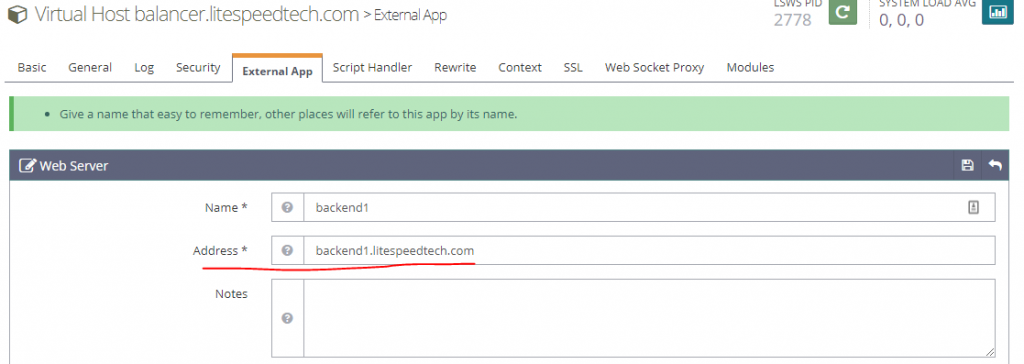Page Contents
Use OpenLiteSpeed as Load Balancer
This wiki will show you how to set up OpenLiteSpeed as a load balancer.
This example uses three servers:
backend1.litespeedtech.combackend2.litespeedtech.combalancer.litespeedtech.com
backend1 and backend2 will act as back-end nodes, and balancer will act as a front-end load balancer.
Verify Two Back-End Nodes are Working


Each node displays different text in order to distinguish them from each other.
Create an External App
Access the WebAdmin console of the OpenLiteSpeed instance that will be used as the load balancer.

Set Type to Web Server

Set up Back-end Address

For this example, set Address’ to backend1.litespeedtech.com
Create and Set Up a Second External App
Set up another back-end by repeating the previous two steps.

Now there should be two back-end nodes.
Set up Load Balancer
Create a new External App.

Set Type to Load Balancer.
Configure Load Balancer App

Set Worker to proxy::backend1,proxy::backend2 (Multiple workers should be seperated by ,)
You should see the following listed in External App:

Set Context

Set Type to Load Balancer.

Set URI to /

Add Balancer to Back-End Listeners
Add balancer.litespeedtech.com to both back-end nodes’ listeners as a reverse proxy will pass the hostname.


Restart and Verify


This is served by backend2.
Note: The load balancer primarily uses the first back-end as much as possible when traffic is low. Only with higher traffic will the second back-end be used. This is because stateless round robin may break session data.

